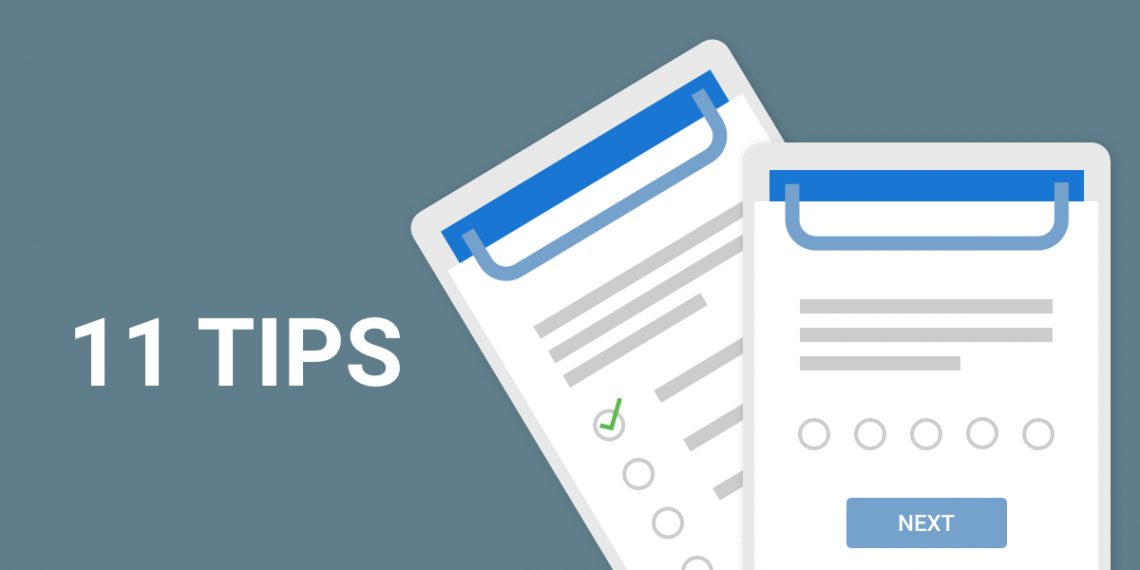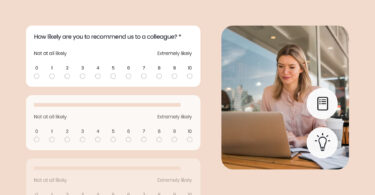If you’re not obsessed with customer satisfaction, you should be. The customer satisfaction survey questions are the way to do so! How do you know if you’re giving your customers amazing experiences if you don’t measure their satisfaction? How can you know how well your products and services are doing? Quantifying customer satisfaction is in your best interests: satisfied customers are more likely to make a repeat visit. They will recommend your business to their friends and coworkers. What’s more, research shows that a loyal customer is worth up to 10 times as much as they spent on their first order.
A great way to calculate customer satisfaction is through customer satisfaction survey questions. However, you can’t just send out any generic survey. If not created properly, customer satisfaction survey questions won’t provide the value you need. Poorly planned surveys lead to several problems, including:
- Incomplete customer surveys
- Inaccurate responses
- Unrelatable content
All of these issues lead to inaccurate scores and a skewed perception of customer satisfaction levels.
Here are some guidelines to help create engaging and effective customer surveys:
Customer satisfaction survey questions guidelines
Define your goals
Every question you include should have a well-defined purpose and a strong reason for being there. You need to cut the fluff and frame each question with precision. Depending on the customer survey’s purpose, if you don’t need additional personal information from customers, don’t ask for it. You wouldn’t want customers to get so impatient with unnecessary questions that they abandon the survey entirely.
Make customer satisfaction survey questions concise
This ties into the point above — in addition to staying focused, try to keep each question short and to the point. Long-winded questions can easily confuse customers. Thus, leading to inaccurate responses or no responses at all. It’s not just about reducing the character count. You need to shave off any excess phrases from your questions. Reducing the overall customer survey length should also be high on your agenda.
Ask one question at a time
Ensure that your survey doesn’t sound like an interrogation. If you want quality responses, you need to give people time to think through each question. When you bombard people with customer satisfaction survey questions, they may try to sneak out of the survey. As a result, half-hearted responses are all that you end up accumulating. This defeats your ultimate purpose of conducting a customer survey.
Be specific and avoid assumptions
When you create customer satisfaction survey questions that assume a customer has a specific point of view about something, you’re likely going to run into problems (unless you are surveying a very targeted group of people). Stay away from industry acronyms, jargon, or references.
Use open-ended questions
The cliché in the field of framing customer survey questions is the multiple-choice question. But if you are looking for impactful and insightful feedback, it may be best to supplement that with open-ended questions. Open-ended questions allow customers to express their own thoughts. It’s best to place brief questions first in the survey to create a sense of progress. Then later present them with the opportunity to elaborate on their thoughts. One strategy is to get people to commit to a question with a simple introduction. Follow up with an open-ended question such as, “Why do you feel this way?” or “Can you give an example?”
Having different types of rating scales within a single survey can be confusing for the survey-taker. For example, a survey that starts off assigning “1” with “Strongly Agree” and “5” with “Strongly Disagree” and then later swaps the meaning of those numbers is bound to put-off customers. Some survey takers won’t follow the change and will give inaccurate answers completely by accident.
Avoid leading and loaded questions
Customer satisfaction survey questions that lead respondents towards a certain answer are not useful for your customer surveys. Remember to cut out language that caters to ego or contorts a respondent’s understanding of what’s being asked. To avoid loaded questions, stay away from any presupposed facts or assumptions.
Make use of Yes/No questions
When you are asking a question that has a simple outcome, try to frame the question as a Yes/No option. These questions are also used to qualify the respondent with less of an ego bias, asking a question like, “Are you considered an expert in your field?” vs. “What level of expertise do you have?”
Offer enough response options
Make sure to include response ranges that cover all scenarios for the respondents, but make sure the ranges don’t overlap. Creating a situation in which a respondent isn’t sure what to select or feels like two answers are equally accurate can create confusion and result in erroneous responses.
Include advanced customer survey logic
To keep every question relevant, use a customer survey tool that allows you to add Skip and Display logic. This just means customers who answer a question one way will “skip” certain other questions. Similarly, new questions will “display” for them based on their response. Adding logic not only gives each survey a more personalized flow, but it also helps you get more information from each customer. For example, if you ask a hotel guest how their stay was and they select”Excellent”, they would be routed to a question asking “Great! What did you enjoy most? Select all that apply.” with multiple amenities to choose from.
Time your survey strategically
Sending customer satisfaction survey questions is equally as important as creating them. You can start with an educated guess of the right time to send a survey and then try varying that a little with future surveys and see which has the highest completion rate.
Offer incentives
It sometimes makes sense to entice customers to take your customer survey — especially if it’s a long one. A variety of data shows that incentives can increase survey response rates by 5 to 20 percent. These incentives could be a discount, a giveaway, or an account credit.
A great product and excellent customer service begin with getting to know who your customers are and what they need. To get that done, you have to gather customer information, and surveys are just what the doctor ordered for that. Check out the top 7 questions that must be asked in a customer survey.

Originally published









